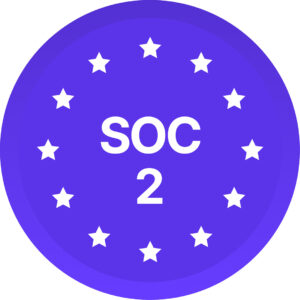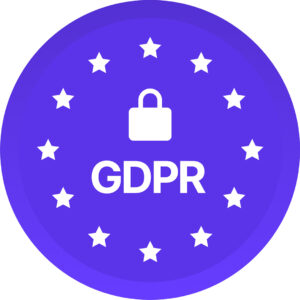As companies strive to create more diverse and inclusive workplaces, measuring worker demographics has become an increasingly important component of their DEI strategies. By tracking data such as race, ethnicity, gender, age, and sexual orientation, businesses can better understand their workforce’s diversity and identify areas where they may need to improve. But beyond just being the right thing to do, there is also a strong business case for measuring worker demographics in DEI strategies.
First and foremost, diverse teams are more innovative and effective. A study by McKinsey & Company found that companies in the top quartile for gender and racial diversity are more likely to have financial returns above their respective national industry medians (Hunt, Layton, & Prince, 2015). Diverse teams bring various perspectives and experiences to the table, which can lead to more creative problem-solving and better decision-making. When employees feel included and valued for who they are, they are more likely to contribute their unique skills and ideas (Hunt et al., 2015).
However, simply hiring a diverse workforce is not enough to reap the benefits of diversity. Companies must also ensure that their workplace culture is inclusive and supportive of all employees. Measuring worker demographics can help identify potential areas of bias or exclusion and allow businesses to take proactive steps to address these issues. For example, suppose a company’s data shows that women or people of colour are consistently passed over for promotions. In that case, they can implement targeted training or mentoring programs to help these employees develop the skills they need to advance (DeKrey & Park, 2021).
Furthermore, measuring worker demographics can also help companies better understand their customer base. Customers are becoming increasingly diverse in many industries, and companies that fail to reflect that diversity may struggle to connect with their target audience. By tracking demographic data, businesses can ensure that their products, services, and marketing campaigns are inclusive and resonate with all customers (Kwok, 2017).
Additionally, measuring worker demographics can help companies avoid legal and reputational risks. Discrimination lawsuits and negative publicity can damage a company’s brand and bottom line. By regularly monitoring and addressing potential areas of bias or exclusion, businesses can mitigate the risk of legal action and protect their reputation (Jackson, Ruderman, & Wechsler, 2020).
However, some challenges and potential pitfalls are associated with measuring worker demographics. For one, collecting and analyzing this data can be time-consuming and resource-intensive. Companies must also ensure that they are protecting the privacy and confidentiality of their employees, particularly regarding sensitive information such as race, ethnicity, and sexual orientation. Tracking demographic data is insufficient to create a truly diverse and inclusive workplace. Companies must also be willing to take action based on their findings and commit to ongoing efforts to promote DEI (DeKrey & Park, 2021).
Companies should follow a few best practices to measure worker demographics in DEI strategies. First, they should be transparent about why this data is being collected and how it will be used. Employees may be hesitant to share personal information if they don’t understand why it is relevant to their job or how it will be used to improve the workplace. Companies should also be clear about protecting employee privacy and ensure that this data is only used for its intended purpose (DeKrey & Park, 2021).
Another best practice is to involve employees in collecting and analyzing demographic data. Employees may be more willing to share personal information if they feel their input is valued and their voices are heard. Additionally, involving employees in the process can help identify areas of bias or exclusion that may not be immediately apparent to leadership (DeKrey & Park, 2021).
Finally, companies should be willing to take action based on their findings. Collecting and analyzing demographic data is just the first step in promoting DEI. Businesses must be willing to implement changes and take proactive steps to create a more inclusive workplace. This may include offering training or mentoring programs, revising hiring or promotion policies, or creating employee resource groups.
Training programs can help address areas where employees may have unconscious biases or may not understand the experiences of their diverse colleagues. Research has shown that diversity training programs can be effective in changing attitudes and behaviours towards diversity and inclusion. For instance, a study by Kalev, Dobbin, & Kelly (2006) found that diversity training programs that lasted longer than one day involved experiential learning, and had follow-up activities were more effective in changing attitudes and behaviours towards diversity and inclusion.
Mentoring programs can also be beneficial for promoting DEI in the workplace. Pairing employees from diverse backgrounds with mentors who can provide guidance and support can help these employees develop the skills and knowledge they need to advance in their careers. A study by Catalyst (2012) found that formal mentoring programs were associated with more promotions for women and employees of colour.
Revising hiring and promotion policies can also help address any biases or barriers that may be preventing diverse candidates from being hired or advancing in their careers. For example, companies can implement blind hiring practices, which involve removing any identifying information, such as names or addresses, from resumes to reduce the impact of unconscious biases. Additionally, companies can establish diversity goals and metrics to ensure that they are making progress towards a more diverse and inclusive workforce.
Employee resource groups (ERGs) can also play a critical role in promoting DEI in the workplace. ERGs are voluntary, employee-led groups that provide a forum for employees to connect and support one another. These groups can help employees from diverse backgrounds feel more included and supported in the workplace and can also provide opportunities for education and advocacy around DEI issues. A study by HBR Analytic Services (2019) found that employees who participated in ERGs reported higher levels of job satisfaction, engagement, and retention.
In conclusion, measuring worker demographics is an essential component of any effective DEI strategy. By tracking data such as race, ethnicity, gender, age, and sexual orientation, companies can better understand their workforce’s diversity and identify areas where they may need to improve. However, simply tracking demographic data is not enough. Companies must also be willing to take action based on their findings and commit to ongoing efforts to promote DEI in the workplace. This may include offering training or mentoring programs, revising hiring or promotion policies, or creating employee resource groups.
_______
References
Catalyst. (2012). The bottom line: Corporate performance and women’s representation on boards. https://www.catalyst.org/research/the-bottom-line-corporate-performance-and-womens-representation-on-boards/
HBR Analytic Services. (2019). The business case for diversity and inclusion.
Kalev, A., Dobbin, F., & Kelly, E. (2006). Best practices or best guesses? Diversity management and the rise of WISE workplaces. The Journal of Social Issues, 62(2), 233-257. doi:10.1111/j.1540-4560.2006.00444.x
This blog was originally published by Diversio EDU (formerly CCDI Consulting) in March 2023.
Our newsletter and blogs feature personal opinions and diverse viewpoints. We aim to create a safe space for our team to share their perspectives on diversity and inclusion. Please note that individual articles may not align with every reader’s view or comprehensively cover a topic. We appreciate the diversity of opinions and respect our team’s contributions.

